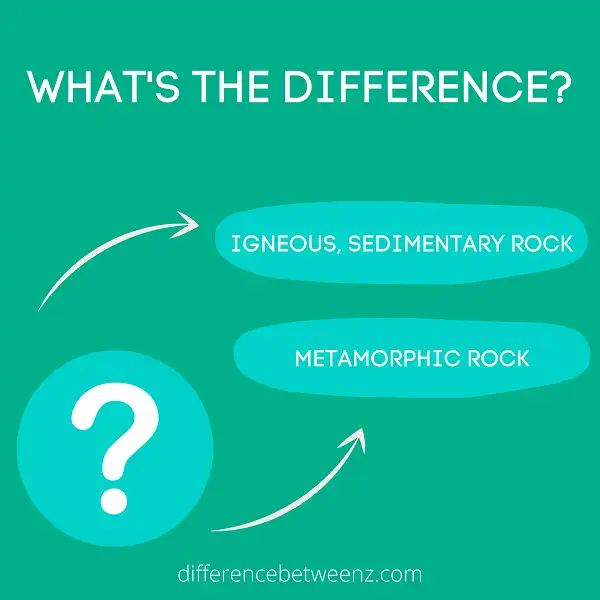When most people think of rocks, they typically think of the three main types: Igneous, Sedimentary, and Metamorphic. While all three types are found in nature, each has its own unique properties and origins. In this post, we’ll take a closer look at these three types of rocks, specifically highlighting the differences between them. By understanding the differences between these rocks, you can better appreciate their individual characteristics and beauty. So let’s get started!
What is Igneous, Sedimentary Rock?
Igneous rocks are those that form from solidified lava or magma. Igneous rocks are the most common type of rock and can be found on all continents. The earth’s crust is made up of approximately three-quarters igneous rock. Igneous rocks are classified by their mineral composition and texture. The most common minerals found in igneous rocks are feldspar, quartz, and mica. Igneous rocks can be either intrusive or extrusive. Intrusive igneous rocks have a large grain size because they cool slowly underground. Extrusive igneous rocks have a small grain size because they cool quickly at the earth’s surface. Sedimentary rocks are those that form from sediments (pieces of other rocks or plant/animal remains). Sedimentary rocks make up about one-quarter of the earth’s crust and can be found on all continents. The most common type of sedimentary rock is sandstone, which is made from sand grains that have been cemented together. Other common types of sedimentary rock include shale (made from clay particles), limestone (made from calcium carbonate), and conglomerate (made from larger pebbles and boulders).
What is Metamorphic Rock?
Metamorphic rock is created by the transformation of preexisting rock types through high temperatures, high pressures, or both. This type of rock is usually found in mountain belts and is often associated with either ancient continental collisions or the margins of modern continents. Metamorphic rocks are classified according to the processes that led to their formation and their texture. For example, foliated metamorphic rocks (such as slate or phyllite) have a layered or banded texture due to the parallel alignment of minerals during metamorphism. Non-foliated metamorphic rocks (such as marble) have a more uniform texture because their minerals are not aligned. Metamorphic rocks can be further divided into three categories: sedimentary, igneous, and metamorphic. Metamorphism can occur either at the surface or deep within the Earth’s crust. Surface metamorphism is usually caused by weathering or tectonic activity, while deep metamorphism occurs due to the extreme temperatures and pressures found at great depths. Metamorphic rocks are an important source of information about the Earth’s history because they can provide clues about the conditions that existed when they were formed.
Difference between Igneous Sedimentary and Metamorphic Rocks
Igneous rocks are the most common type of rock and are formed when molten rock (magma or lava) cools and solidifies. Igneous rocks can be either intrusive (plutonic) or extrusive (volcanic), depending on how they form. Sedimentary rocks are made up of smaller pieces of rock that have been combined together over time. They usually form at the bottom of lakes and oceans, where the weight of the water squeezes the smaller pieces of rock together. Metamorphic rocks are rocks that have been changed by heat and/or pressure. The word “metamorphic” comes from the Greek words “meta” (meaning change) and “morph” (meaning form). Most metamorphic rocks started out as either Igneous or Sedimentary rocks, but have been changed into a different type of rock by heat and/or pressure.
Conclusion
Igneous, sedimentary, and metamorphic rocks are all different types of rocks. Igneous rocks form when molten rock (magma) cools and solidifies. Sedimentary rocks form from smaller pieces of rocks that have been broken down by weathering and erosion. Metamorphic rocks form from pre-existing igneous or sedimentary rocks that have been changed by heat or pressure. Each type of rock has unique properties that make it useful for different applications.


